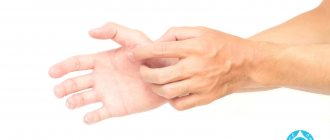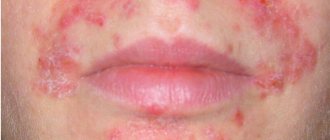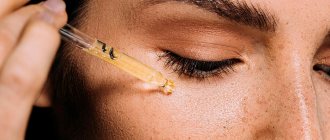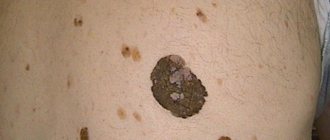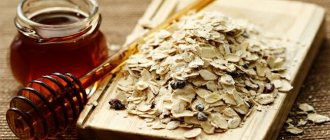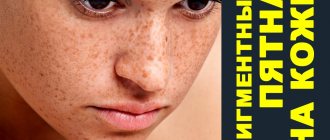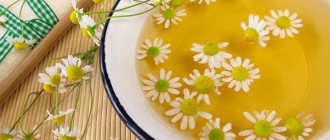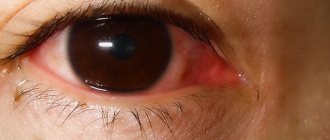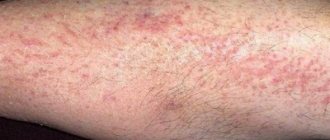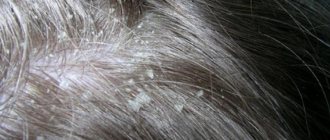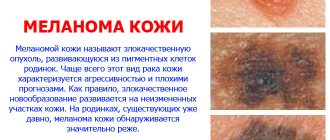Along with dry hands, peeling of the skin on the palms sometimes occurs (photo). This can happen for various reasons, once identified, it will be possible to prescribe the correct treatment. The skin can peel in both adults and children. Most often, women are susceptible to this unpleasant and unsightly disease, as they have contact with household chemicals. Children are also often exposed to this scourge as a result of a lack of vitamins or minerals. But first things first!
There are plenty of factors that affect human skin in an environmentally unfavorable climate. Every day we experience stress, we breathe polluted air, and we are exposed to chemical reagents everywhere. And no one has canceled the influence of microorganisms (various fungi). All this ultimately leads to health problems. And the skin of your hands is no exception: it is also subjected to daily tests.
Why do the palms of your hands peel?
Various reasons can lead to peeling of the skin on the palms of the hands. Dermatological problems arise both due to infections and other problems in the body, and the use of the wrong soap. Sometimes changing the detergent becomes the solution to the problem. If the skin on your palms peels off for a long time, with pain and signs of eczema, you need to visit a dermatologist.
Under the influence of external factors
You can answer why your palms are peeling by understanding what the patient’s hands come into contact with. The following factors lead to the fact that the skin on the hands begins to burst, crack and peel off:
- constant use of household chemicals without protective gloves;
- weather conditions: sharp temperature fluctuations when returning from a cold street to a heated room, chapping of the skin, excessive exposure to ultraviolet radiation;
- antimicrobial or deodorizing soap, which dries out the skin;
- contacts with soil, dust, cement, frequent construction and excavation work.
Internal reasons
Peeling skin on the palms of the hands often occurs in people with dry skin. Their lack of hydration is aggravated by constant contact with water or various irritants. The skin on the hands peels even after prolonged treatment with antibacterial drugs and antibiotics. The skin peels off not only on the back of the palms, but also between the fingers. In a young child, this condition is often a sign of a fungal infection - due to the fact that children show curiosity and do not care about the cleanliness of the objects being examined.
Allergic reaction of the body
Peeling of the skin on the palms of the hands is caused by allergic reactions to:
- poor nutrition;
- incorrectly selected cosmetics, detergents, creams, household chemicals (this could be washing powder or dish soap);
- dust, pet hair;
- course of medications.
Skin diseases of the palms
When the skin on the hands peels and peels for reasons related to fungal diseases, psoriasis, dermatitis, scabies or eczema, this is indicated by accompanying signs. These are itching, red spots, rash, redness. In such cases, cosmetics, moisturizers or changing soaps cannot help. You need to see a doctor and conduct an analysis to identify the causative agent of the disease. A course of therapy is prescribed by a dermatologist, but only after diagnosis.
Lack of vitamins in the body
Peeling of the skin on the palms of the hands is caused by a lack of vitamins. The lack of vitamins A, D, E and group B especially affects the hands. The problem worsens in spring and autumn. The balance of essential substances allows you to replenish vitamin complexes. You can correct the lack of necessary substances by eating certain foods. To do this, change your diet by including foods rich in these vitamins:
- A – found in apricots, pumpkin, parsley, carrots, tomatoes, green peas;
- D – found in chicken egg yolks, sour cream, liver, butter;
- E – present in corn, potatoes, cheese, carrots;
- B – in nuts, bran, potatoes, spinach, yeast, green vegetables.
What are the symptoms of peeling palms?
Unfortunately, palms and fingers do not always peel due to improper care or lack of vitamins.
Unfortunately, palms and fingers do not always peel due to improper care or lack of vitamins.
This phenomenon can be caused by serious pathologies of the body that require qualified medical care.
The following diseases can cause peeling of the epidermis on the palms:
- Chronic dermatosis (psoriasis).
- Skin fungus (trichophytosis, candidiasis).
- Hormonal imbalance in the body.
- Skin diseases (atopic dermatitis, dry eczema, lichen).
- Diabetes mellitus I and II degrees.
- Pathologies of the endocrine system.
- Infectious skin disease (scabies, scarlet fever).
- Avitaminosis.
- Xeroderma.
- Gastrointestinal diseases of various etiologies.
Only a qualified dermatologist will be able to understand the symptoms, determine why the palms and fingers are peeling, and prescribe the correct treatment.
Often the epidermis on the palms peels off due to staphylococcal infections, syphilis or viral hepatitis.
Carefully! Self-treatment in such cases is unacceptable. Only a qualified dermatologist will be able to understand the symptoms, determine why the palms and fingers are peeling, and prescribe the correct treatment.
Treatment of peeling hand skin
Having found out why your palms are peeling, you can begin to eliminate the cause of these unpleasant symptoms and their consequences. Regardless of what led to peeling - illness or lack of hygiene - it is important to take care of skin health. For example, first of all, you should make sure that it is not overdried. Liquid and antibacterial soap should give way to a mild toilet hygiene product or special gel. After washing your hands, you need to dry them well, paying attention to the areas between the fingers. When contacting detergents and household chemicals, it is important to wear gloves.
If it is determined that the skin is peeling off the palms due to an allergy, the substance should be identified and eliminated from everyday use. You need to use ointments. In such a situation, taking anti-allergy antihistamines in tablets or drops is indicated. The damaged epidermis must be nourished and moisturized every day with special ointments and gels. Among them:
When allergies worsen, ointments containing corticosteroids are prescribed - Advantan, Lokoid and others. They act directly on the affected areas of the skin without affecting the cause of the disease. When choosing creams for skin care, it is better to give preference to formulations with extracts of calendula, St. John's wort, and chamomile. When going out into the cold or bright sun, you need to apply protective equipment to your hands 30 minutes before your walk. It is recommended to remove pieces of dead skin regularly using peeling gels and hand scrubs.
It is important to carefully monitor the affected areas of the palms: an infection can penetrate into the bursting of the inflamed blister. Folk remedies give good results for peeling palms: compresses, hand masks, baths. Here are a few alternative medicine recipes that can be easily implemented at home:
- Honey mask. Apply honey to the affected skin for half an hour, then rinse well.
- Baths. The traditional way is to soak your hands in water with salt or lemon juice for 30 minutes, dry the skin with a towel, and put your palms in a bath with warm vegetable oil (olive, almond) for 20 minutes.
- Vitamin bath. Heat the olive oil in a water bath, pour in 5 drops of chamomile essential oil, vitamins A and E (crush two capsules each). Place your palms in the container with the composition for 15 minutes.
- "Sour milk" recipe. Pour yogurt or whey into a bowl, heat slightly, add a teaspoon of starch, and lower your hands. Leave for 15-20 minutes, wipe well. After the mask, apply nourishing cream.
- Scrub made from oatmeal: apply the paste of oatmeal onto your hands using rubbing movements, then rinse off.
- Potato mask. Grate the potatoes, cover the skin of your fingers and palms, put on gloves, and wash off the mask after 2 hours.
- Sour cream mask. Mix a glass of fermented milk product with the juice of a whole lemon and egg yolk. Apply the mixture of these components to gauze, apply to your hands, wrap them on top with cellophane and, additionally, with a warm towel. Keep for 25 minutes. Remove the mask from your hands with a cotton swab.
- Cucumber juice. Cut off a piece of the vegetable, wipe the skin of your hands, then apply a lotion made from lemon juice and glycerin cream to prevent peeling.
Folk remedies
Natural folk remedies will help you cope with dry skin. They gently and effectively affect the upper layers of the epidermis.
Foot baths. Baths with oils soften the skin of the feet well. To do this, you need to dilute 1 tbsp. l. flaxseed oil in a small bowl of warm water. The procedure takes about 10 minutes. Baths with natural decoctions calm and relieve inflammation. Chamomile and rose petals, taken in equal quantities and poured with boiling water, are perfect. Leave the broth for 20 minutes, then pour it into a container with warm water. After such procedures, you can give your child a light massage with cream.
Compresses with lemon. Lemon is known to have excellent softening properties. To do this, squeeze out a sufficient amount of juice and soak cloth napkins with it. Apply to problem areas (knees, elbows, heels) for 10 minutes. Lemon will dissolve the upper stratum corneum, which can be easily removed after the procedure with a damp towel.
Cucumber tincture. Cucumber copes well with dryness, moisturizes and refreshes. To prepare the tincture, pour vodka over freshly chopped cucumbers and leave for two weeks. The container with the mixture should be in the sun. Rub the cleansed skin of the feet with a towel soaked in the tincture. Can also be used on other dry areas. The skin will become soft and elastic.
Pediatrician. Graduated from the St. Petersburg State Pediatric Medical Academy. Additionally, he specializes in the departments of pulmonology and nephrology of the Department of Faculty Pediatrics of the St. Petersburg State Pediatric Medical Academy.
Diagnosis and treatment
The reasons why the skin on the palms and fingers peels are varied, as are the diseases that cause these symptoms:
- Vitamin deficiency. Damage to epidermal tissue occurs when there is a deficiency of vitamins A and C. Spring vitamin deficiency is identified as a separate disease. For treatment, a course of vitamin complexes and the consumption of fresh vegetables, fruits and dairy products are prescribed.
- Allergies to chemical detergents, latex products and other cosmetics. In response to irritation, the skin peels and cracks. Treatment of allergies with Bepanten, Elocom, Fenistil is complemented by folk remedies and avoidance of allergenic foods such as chocolate, honey, carbonated drinks and others. All aggressive chemicals should be removed, moisturizers, emollients, ointments and creams should be used.
- Contact dermatitis is a disease of chemical industry workers and anyone who has direct contact with household chemicals and latex gloves (cleaners).
- Fungal skin infections are the most common dermatological disease. Girls (dishwashers, saleswomen in meat departments), male construction workers, workers in hot shops and chemical plants often suffer. It appears as weeping lesions, the surface of which is covered with bubbles, spots, and a whitish coating. The skin in them peels and cracks.
- Eczema. It has many varieties and manifests itself on different areas of the skin with the same symptoms. During an exacerbation, blisters and cracks appear, the skin of the affected areas itches and burns. Scratching leads to secondary infection.
- Psoriasis. The disease is known to be incurable. The appearance of plaques, scales and crusts on the hands and between the fingers is characteristic. The skin becomes rough and causes severe itching.
- Peeling of the skin associated with endocrine disorders is manifested by increased sweating of the palms and interdigital folds, and roughening of the feet.
- A common cause of dry and red hands is chapping in cold weather and the appearance of flaking.
- Some infectious diseases are accompanied by detachment of the upper epidermis: lupus erythematosus, syphilis, scabies, lichen, hyperkeratosis (increased cell division). Antibiotics and antiviral drugs are used in the treatment of such skin pathologies.
If you notice that your skin is drying or flaking, apply cream, observe and wait. If other symptoms are added, you should consult a dermatologist. In the treatment of dermatitis and eczema, anti-inflammatory and antiallergic drugs are prescribed.
It is necessary to find out the cause of the exacerbation and follow a diet during such periods. Fungal diseases are diagnosed after examining the scales under a microscope.
Drugs for the treatment of candidiasis: Ketocanazole, Candide, Clotremizan, Fluconazole and others. They are taken for a long time (up to 1 month) until the symptoms disappear. Antifungal ointments are used externally for another week after recovery for prevention.
Traditional methods of treatment
Alternative medicine always comes to the rescue when needed. The collection of modern healers contains old recipes, but there are also completely new developments. Here are just a few recipes, already tested in practice, that can bring the skin of your palms to normal condition.
Baths with a series
The series is considered a powerful herbal preparation.
It exhibits a lot of useful properties and is widely used in the treatment of a wide variety of pathologies. But this miracle herb demonstrates its best qualities in the treatment of dermatological problems. Baths with a decoction of the string will help relieve unpleasant symptoms when the palms of your hands burn; the causes of this phenomenon may be unknown. It’s just that this method is universal, it responds to any situation and alleviates the patient’s condition, regardless of the cause of the pathology. To make a healing bath, you need to prepare an infusion:
- Pour boiling water (2 liters) over 30 g of dry string grass.
- After infusion, which will take no more than ½ hour, the infusion is poured into a basin or other container suitable for this purpose.
- It is recommended to steam your hands in the solution for up to half an hour. It is advisable to do the procedure in the evening for 10 days. During this period, the redness should disappear.
Application of compresses
They say that this is one of the most beneficial procedures for the skin of the palms.
To implement this, you will need to prepare a medium-sized juicy aloe leaf. It must be rinsed well under running, not too hot water, then passed through a meat grinder. You can use any other method to obtain chopped green leaf mass. The output should be a mucous paste, from which the juice is extracted at the next stage of preparation. The remaining pulp after squeezing will be used. Add honey (1 tsp) to it and mix. The mixture is then carefully laid out on a clean gauze napkin, which should be applied to the palms and secured. If you do this compress for several days, swelling will disappear, blood circulation in the hands will improve, and the color of the skin surface will normalize.
Treatment with bile
For liver problems that affect the color of the palms, you can try an unusual method: the sick person is offered to swallow the fresh bile of a young rooster. The bird's gall bladder must be swallowed raw without biting. You can wash down a not entirely pleasant meal with a glass of cold water. It is believed that bird liver stimulates the liver, after which the redness should definitely disappear from the palms.
Traditional medicine has a very skeptical attitude towards such methods. Moreover, doctors do not recommend that patients self-medicate. But the experience of traditional healers should not be rejected either. In any case, to avoid unforeseen situations, it is better to enlist the support of specialists.
Causes of hand damage in children
In teenagers, the skin on the palms of the hands dries and peels due to hormonal changes, and not vitamin deficiency, as is often assumed.
“To diagnose peeling skin on a teenager’s hands, it needs to be shown to an immunologist or pediatrician.”
The reason for the decrease in the protective functions of the epidermis on the hands of a child may be childhood infectious diseases: measles, scarlet fever, staphylococcus. Often a rash, irritation, itching appears on one hand of a child (usually on the right hand), the cause being a fungus.
Children most often become infected with it because they touch dirty objects on the street. Such diseases are difficult to treat and recur (either disappear or reappear). The photo shows features of fungal infection of the hands.
For mycosis, in addition to pharmaceutical drugs, treatment with folk remedies is used in the form of infusions, decoctions, herbal baths (celandine, lavender extract, chamomile), various oils (almond, flaxseed, sage oil).
A potato mask moisturizes well and makes the skin of the hands soft and tender (raw grated potatoes are applied to the damaged skin, a glove is put on the hand for two hours). Hand masks are made from fermented milk products (sour cream or kefir is applied to the dry surfaces of the palms and covered with a napkin).
Salon treatments
No less effective than home care, various salon procedures will help solve the problem.
Paraffin therapy is very popular today. With its help, you can quickly get rid of peeling palms, restore and moisturize the skin of your hands.
Paraffin therapy is very popular today. With its help, you can quickly get rid of peeling palms, restore and moisturize the skin of your hands.
The treatment procedure is performed in several steps:
- The skin of the hands is thoroughly cleansed using neutral products.
- Then a nourishing or moisturizing cream or oil is applied.
- Hands are immersed 2-4 times in a container filled with a mixture of warm paraffin and medicinal components, and insulated with special gloves.
- After 20 minutes, the paraffin is removed, and a restorative or anti-inflammatory cream is applied to the skin.
In addition to paraffin therapy, salons can offer other SPA treatments aimed at moisturizing, restoring the skin of the hands and getting rid of flaking.
Prevention
To avoid unpleasant symptoms on the skin of the palms and fingers (itching, peeling, cracks) you need to:
- Moisturize your hand skin daily.
- Exfoliate dead cells with scrubs.
- Take complexes of vitamins and minerals.
- Include all necessary components in your diet: greens, nuts, cereals, cereals, vegetable oil.
- Wash your hands with moisturizers containing glycerin.
- Make hand baths with herbal infusion.
- Practice light hand massage.
- Give preference to hypoallergenic cosmetics.
Hands, our main helpers, need constant care, perhaps even more than the face and other parts of the body.
- Protect your hands from temperature changes. In cold weather, be sure to wear warm gloves or mittens.
- Dishwashing detergents should be gentle, do not forget rubber gloves (if you are not allergic to them!).
- Avoid contact with soil and cement during construction work; if necessary, wear protective gloves.
- Severely irritate the skin of the hands and feet, mechanical injuries lead to cracks, as well as burns and hypothermia.
- On the inside of the palms, dryness appears as a result of dehydration. You need to increase the amount of water you drink to cope with it.
- There are causes of dryness and flaking associated with uncontrolled use of antibiotics and antihistamines.
- Age-related changes are added: hormonal imbalance, metabolic disorders, reduced immunity. Measures are being taken to stabilize such conditions. In patients with diabetes mellitus, the skin on the feet peels and itches.
- Some people periodically experience dry and peeling skin on their hands. The reason is bad heredity. Treatment is not required, but such skin needs constant care: moisturizing, relieving irritation with ointments and creams, dermatological diseases treated in a timely manner, a diet rich in fresh vegetables and fruits.
Often the skin on the hands peels off due to exacerbation of parasitic diseases. In this case, you cannot do without medications.
Medications
If the cause of peeling skin from the palms is a skin or parasitic disease, drug treatment is necessary.
If the cause of peeling skin from the palms is a skin or parasitic disease, drug treatment is necessary. Diflucan, for example, will help.
Only pharmaceutical products will help you quickly and effectively cope with the primary ailment, while simultaneously solving the problem of flaky palms.
In the presence of a fungal infection, the following drugs help well:
- Diflucan capsules;
- "Lamisil";
- "Nizoral";
- "Exoderil";
- "Flucanazole";
- "Mifungar."
The local product should be applied in a thin layer to dry, clean skin of the hands. The duration of treatment is from 2 weeks to 2 months. In severe cases, the course of treatment can be extended to six months.
Prednisolone is used topically, an ointment based on hydrocortisone and cortisone.
For allergic reactions, antihistamines are prescribed orally - Suprastin, Diazolin. In addition to them, sorbents and absorbents are often used to quickly cleanse the body of toxins.
Prednisolone is used topically , an ointment based on hydrocortisone and cortisone. The product reduces inflammation and allergy symptoms. The course of treatment is no more than 14 days.
To treat hand skin diseases (dermatitis, psoriasis, dry eczema), anti-inflammatory ointments are applied topically:
- "Lokoid";
- "Bepanten";
- "Advantan";
- "Fenistil".
To treat diseases of the skin of the hands, anti-inflammatory ointments, for example, Bepanten, are applied topically.
Prednisolone is also often used.
It should be noted that all ointments can help only in the initial stages of the disease . For the treatment of advanced forms of peeling that occur on the palms and fingers, a comprehensive treatment is prescribed.
As an addition to local remedies, a dermatologist may prescribe hormonal injections and antibiotics. A good result is achieved by intravenous administration of anti-inflammatory drugs, for example, sodium thiosulfate. Sedatives and immunomodulators are often used in therapy.
Why does the skin on the palms of the hands peel?
Why does the skin on my hands peel? There may be reasons for this:
For external reasons, your hands peel if you don’t take good care of your skin. This occurs due to dry skin. Under what conditions does this happen?
Hot water has a negative effect on the skin of your hands. It takes moisture from the skin. Therefore, try to wash in well-warm, not hot water. If you had to come into contact with her for any work, do not forget about hydration. It must be timely.
Dirty water also negatively affects the condition of the skin of your hands. If you constantly come into contact with it, then not only peeling will appear on your hands, but also inflammation due to the presence of microbes in the dirt.
The skin on men's hands often peels, the reason being poor care. Representatives of the stronger sex rarely moisturize their hands or try to at least protect them with gloves. True, there are cases when men’s skin also suffers from hidden diseases.
Photo from the site: kiev.cleaning
Also, the skin on your hands flakes and peels off after contact with low-quality or simply unsuitable household chemicals. It can either dry out the skin too much or cause allergic reactions on it.
To eliminate hand skin problems caused by external factors, it is enough to stop the causes. It is also important to keep your hands well moisturized.
Internal causes are difficult to determine. It happens that a person devotes a lot of time to cosmetic care of his limbs, but peeling skin on his hands still appears.
Why do the palms of your hands peel in this case? The reason is due to diseases of the body, the symptoms of which appear gradually. It happens that the first bells are just visible on the hands.
Flaky spots on the hands can be a result of hormonal imbalances. Due to the loss of balance in metabolism, the skin begins to function not as it should. This changes its condition and appearance. It may become too fat, but it may also skew in the opposite direction, leading to dryness and flaking.
Rash on the palms of an adult
There are many reasons for the development of rashes on the skin of the palms of an adult. Among them are external influences and internal causes associated with diseases. The rash appears as a result of:
- contact dermatitis;
- autoimmune pathologies – psoriasis, rheumatoid arthritis;
- infections - syphilis, rubella, measles, mumps, meningitis;
- anaphylactic shock;
- food allergies;
- insect bites;
- aggressive environmental action;
- influence of allergens;
- chemical burns;
- stress;
- cold, warmth.
The appearance of such formations on the face and other parts of the body is not surprising. The palms are a special case – there are no sebaceous glands there. Only their inflammation provokes the formation of acne. Why does a rash appear on the palms? Reasons for this phenomenon:
- allergic reactions;
- side effects of medications;
- gastrointestinal pathologies;
- excessive sweating;
- enterovirus infection;
- scabies;
- chickenpox;
- stressful situations;
- lack of hygiene;
- fungal skin infections.
The appearance of acne on the palms requires contacting a dermatologist. The doctor will determine the cause of the rash and prescribe:
- treatment of the underlying disease;
- the use of ointments that relieve unpleasant skin symptoms;
- use of medications – tablets, injections;
- diet;
- preventive measures to prevent recurrence of rash formation.
The appearance of small watery blisters is evidence of problems in the body. When pimples appear on the palms and itch, you need to visit a dermatologist to establish a diagnosis and prescribe treatment. The causes of the rash are:
- scarlet fever;
- chronic eczema;
- typhus;
- venereal diseases;
- dyshidrosis;
- emotional turmoil;
- stress;
- insect bites;
- chemical burns;
- action of bacteria and viruses.
One of the reasons for the appearance of pimples on the palms is dyshidrotic eczema. The disease is characterized by acute development, which is provoked by contact with chemicals in everyday life, cosmetics, and washing powders. Once it appears in the body, even after a course of treatment, it can reappear for no reason. In addition to the rash, it is possible:
- enlarged lymph nodes;
- appearance of weakness;
- temperature increase;
- development of painful symptoms.
Red rash
Why does a child develop a rash on his palms? The cause of red dots is prickly heat; in infants, diaper dermatitis and chickenpox. A reaction to household laundry detergents or the introduction of new complementary foods is possible. For adults, a possible cause is erythema - pinpoint redness caused by dilated capillaries. In appearance they may be:
- hard pimples - papules;
- nodules – dense rashes more than 5 mm;
- blisters with white spots of pus - pustules;
- plaques are formations tending to merge;
- blisters are individual watery fragments of the rash over 0.5 centimeters.
When, for some reason, a person begins to actively produce sweat, and evaporation is impaired, prickly heat develops. It is often observed in hot weather. There are 3 types of rash on the skin of the palms:
- small bubbles, contents – pearlescent – crystalline;
- the appearance of red spots, followed by infection, suppuration - red;
- penetration of inflammation deep into the skin, blockage of sweat glands, their rupture, development of microbial eczema - deep.
Dermatologists consider diseases and external factors to be the causes of prickly heat on the palms. Causes of rash:
- thermoregulation disorders caused by nervous and endocrine pathologies;
- infections;
- intoxication of the body;
- obesity;
- heavy physical activity;
- diseases of the heart and blood vessels;
- synthetic clothing;
- use of oily cosmetics that impair skin breathing;
- the need to work with gloves;
- high temperature outdoors, indoors.
A factor in the spread of pustular rash on the palms is dyshidrosis, a type of eczema. The formation is accompanied by pain and severe itching. Skin diseases are characterized by:
- the appearance of redness, swelling;
- the appearance of bubbles with clear liquid;
- their subsequent damage;
- formation of ulcers;
- development of thickenings, cracks;
- with the ingress of viruses and bacteria - purulent inflammation;
- probable infection of the entire body.
Hands are peeling: what to do?
If your hands are peeling, do the following:
- Change your lifestyle, strengthen hand skin care.
- Carry out moisturizing procedures for external causes of the problem or undergo therapy for internal ones.
- Decide on the prevention of peeling.
First of all, you should take care of moisturizing the skin, as well as eliminating negative influence factors. Wear gloves when doing dirty housework and gardening. Also, always wear warm gloves or mittens during the cold season. This will protect the skin, so it will need moisturizing less. She will be able to regulate herself. But you can’t do without creams either. It is necessary to moisturize your hands with cosmetics morning and evening. Use products intended for summer or winter, depending on what season it is. Don't forget about masks. They nourish the skin with vitamins and soften it. Thus, skin care will be comprehensive and correct.
Photo from website: IDEALES.ru
If the cause of peeling is a lack of vitamins, then you will have to change your diet or start taking medications. The latter are not very effective, and they cannot be used endlessly, as this negatively affects the body. But the diet can be changed without a second thought, and for a long time. You should eat more fruits and vegetables, especially greens. Nuts, grains, dairy products and beans are also good for the skin. Separately, vegetable oil should be mentioned. It must be taken both internally and externally, lubricating your hands.
Photo from the site: eruditochka.ru
If the cause is illness, the doctor will prescribe medications that will either cure skin problems or relieve symptoms. You will have to be content with the latter option if you have inherited eczema or psoriasis. It’s still difficult to argue with genetics.
To prevent flaking and itching from returning, try to maintain a healthy lifestyle, eat well, and avoid contact with things that cause a negative reaction in the body.
Photo from the site: OMaske.ru
Is it contagious and how is it transmitted?
Palm eczema is not contagious, regardless of its form and cause. Even if the disease is provoked by the penetration of pathogenic microflora, this does not mean that by shaking the hand of such a person you will get sick yourself. Yes, theoretically, a fungus or bacteria can get on the skin, but only get it, and not cause illness. In addition, people suffering from eczema constantly treat their skin with various drugs, which virtually eliminates the transmission of pathogens. In a much larger volume, bacteria and fungi enter human skin through handrails in public transport, door handles, etc.
Moisturizing masks for flaky hand skin
They should be used if the cause of peeling is purely external. In this case, your hands need increased hydration.
Moisturizing with oils
This can be achieved using an oil mask. What you will need:
- vegetable oil (preferably olive);
- chamomile essential oil;
- capsules of vitamins A and E.
You should heat the oil, add 5-6 drops of essential oil to it. Then break it into the mixture and pour the vitamins. All this needs to be mixed. Keep your hands in this mask for about 15 minutes. There is no need to wash them after this. Blot them with a napkin or towel so that the fat does not drip from your hands and stain everything around.
Chamomile mask
You can also make chamomile moisturizing masks. To do this, brew the herb and cool slightly. Add a tablespoon of flaxseed and almond oil to the broth. Essential oils are also added there. You can use the ones you like best. Keep your hands in this mixture for fifteen minutes.
Even if your dryness and flaking are not very severe, you should still eliminate the problem. After all, if it gets worse, then you will have to endure significant discomfort, and this is unnecessary suffering that may not exist.
Watch also the video on this topic. It contains additional information that may help you.
